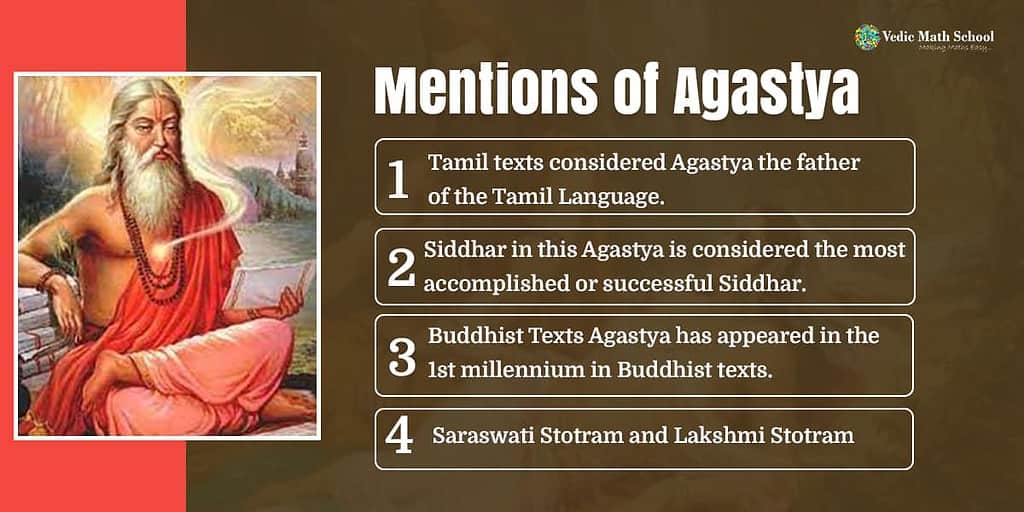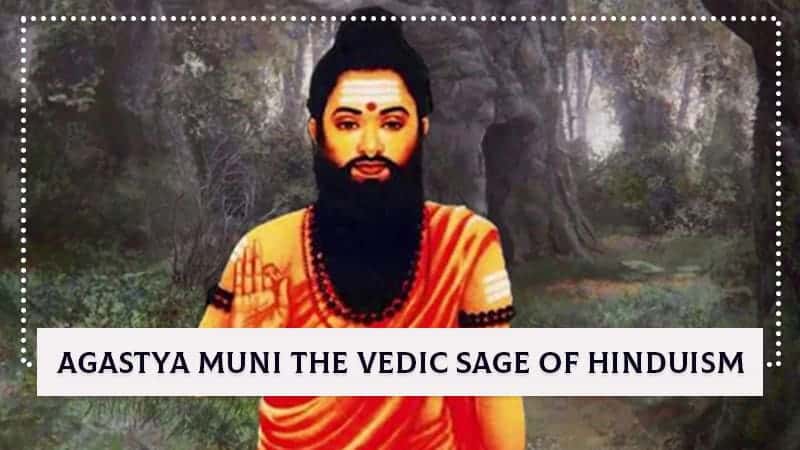Agastya Muni has been a sage for so many years. Starting from the mountains covered with snow in Northern India to all the temples far off in Southern India. The life we are living has originated through the beliefs a thousand years ago and these beliefs have been an influence on numerous generations which has formed our civilization.
All these aspects of civilization are it traditions, beliefs, or be it the evolving technologies and many more have been contributed by the sage of Hindu religion “Agastya Muni”.
Table of Contents
Time and Place of Birth
There is no particular date for the birth of Agastya but he lived from (1200-1500 BCE) and Ramayana it has been described that he lived in the Danka forest in the southern part of Vindhya Hills.
Rishi Agastya Muni Life
The two twins were born Sage Agastya and Sage Vashistha and were celebrated as the two twins who were born from a mud pitcher. The birth of Agastya Muni has been marked as a milestone in history and various events, it has been followed and has been tied to Agastya Muni’s quality of intelligence.
Agastya is known for many names, one of which is ‘Kumbh Yoni’ which has the meaning ‘the womb of who is mud pitcher.
Agastya lived with a lot of discipline, educated himself, and became a sage who is now celebrated. A sage who is believed to walk long distances across the geographies and is also believed to have lived over 400 years of span in the form of preaching, scriptures, and practices.
Agastya led an ascetic life as a Brahmin and all the unknown origins that have been speculated and of the Vedic Era was a migrant whose ideas influenced the southern part of India.
Work’s of Rishi Agastya Muni
Agastya is known for his popular works which were “Agastya Samhita” and “Naadi Shastra” both these works were based in the field of he was strongest ‘medical’ and ‘astronomy’. Agastya is considered the father of medicine in Indian history among all the other streams.
Agastya Samhita
This was the book on medicines by Agastya Muni. In this book he has included the description of medicines and instructions for creating medicines for various diseases like fever, abdominal problems, cancer, bone problems, eye problems, and brain problems as well which was done years ago.
Naadi Shastra
In this book by Agastya it’s the science of astronomy. In this book he tried to presume the rebirth of people and living and to be born in the world, and lives of people who are dead.
In the book, more than 1000 such presumptions are mentioned and are also saved by thousands of generations. It now also is believed by the devotees that it’s the best way to predict someone’s future and knowing the past which is considered a great invention!
Must Read These Also.
- Jivaka the greatest physician and surgeon of ancient India
- The ancient muni and his treatise of natya shastra
- Manava the Hindu author of Sulbasutaras
Agastya Ashram
It has been rumored that Agastya had his Ashram (Hermitage) but there are inconsistent stories and locations about the ashram by the ancient and medieval period era’s Indian texts. Two of the legends from ancient India placed it at the banks of river Godavari in the Northwest in Maharashtra somewhere near Nasik in the small towns of Akole and Agastya Puri.
Other considered places mentioned in the Northern and Eastern part of India were near Kolhapur (Maharashtra) and Kannauj (Uttar Pradesh) , even near Rudraprayag and Satpura Range.

Textual Sources
Vedas
Agastya has been mentioned in all the four Vedas of Hinduism. He had run a school called “Gurukul” as evidenced by hymns and was also an author of the “Rigveda” in 1.165 to 1.191 the hymns. He was a known sage of the Vedic Era and most of the Rigveda written by other sages have been referred to as Agastya.
Ramayana
The sage of Indian era Agastya has been mentioned in the Hindu epic “Ramayana” in most of the chapters through his Hermitage (ashram) located at the banks of river Godavari. It also mentioned that Rama praises Agastya as a great lord who can do what gods find is impossible.
Mahabharat
The sage Agastya’s story has been mentioned in one more Hindu epic which the second one “Mahabharat” in the chapters he has been described by the conversation between Yudhishtara and Lomasa as an epic sage who had many powers of digestion and indigestion.
Puranas
The Puranic literature in the Hindu religion had numerous stories about Agastya which is more elaborate, inconsistent, and more fascinating. Many had mentioned him as the Saptarishi (seven greatest rishis) and others mentioned him as the eighth or eleven talented sage of Hinduism.
Must Read These Also.
- The muni who was the last mathematician of the vedic period
- Six Famous Geographer in the World
- The Woman who was a Mathematician and Contributed Towards the Society all Her life
Others Mentions of Agastya
- Tamil texts considered Agastya the father of the Tamil Language.
Siddhar in this Agastya is considered the most accomplished or successful Siddhar. - Buddhist Texts Agastya has appeared in the 1st millennium in Buddhist texts.
- Saraswati Stotram and Lakshmi Stotram

Legacy
- Agastya Muni’s legacy is in the form of temples in Tamil Nadu:
- Sri Lobamudra Samedha Agasthiyar Temple, in Arulmigu Chidambara Vinayagar.
- Sri Agasthiyar Temple, in Agasthiyar falls, in Papanasam Tirunelveli.
Must Read These Also.
- Maharishi Vagbhata the Great Physician in Ayurvedic
- 8 Cool Mathematical Puzzle Games to Engage and Challenge
Conclusion
It’s a salute to this sage who made India famous with his works and attracted the world through his works and invited to come and see the glory of India. No matter what, India has been known by a lot of sages and their works like Agastya Muni.
Today’s article was well researched and documented and also if you want to know more details then there are a lot of books which are based on the life of Agastya Muni you can check those out!
This was all in this article thank you!






